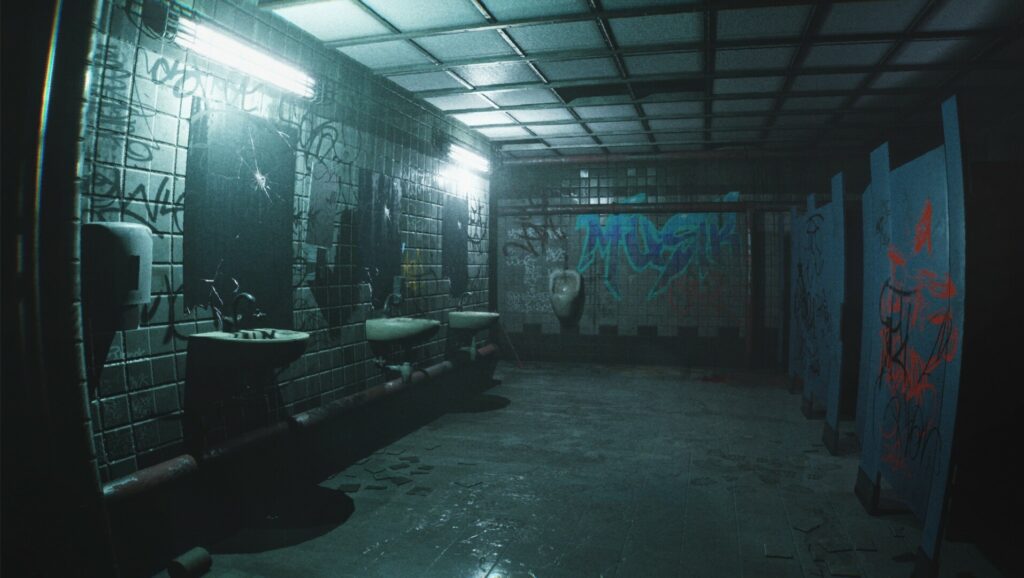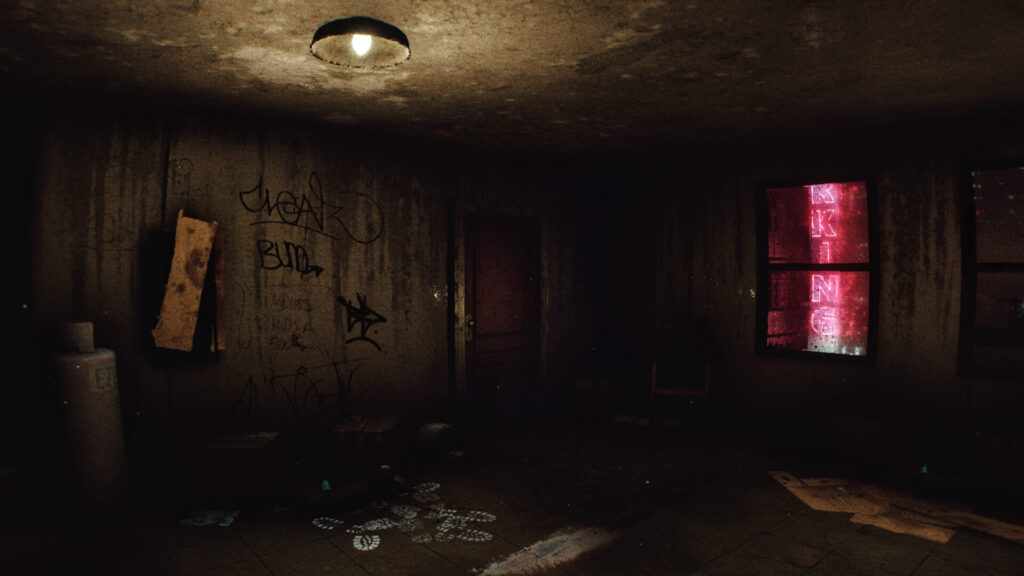Set against the backdrop of 1990s New York City, Homeless offers a psychological horror experience that thrives on atmosphere and suspense. Developed with Unreal Engine 5, the game delivers a hauntingly immersive environment that pulls players into a nightmarish tale of paranoia and survival. While it’s short and linear, Homeless is a budget-friendly title that scratches the itch for fans of walking simulators and atmospheric horror.
A Night to Remember: Story and Setting
In Homeless, you step into the shoes of Albert, a night shift security guard at a Brooklyn subway station. What begins as a routine shift quickly unravels into a descent into madness when Albert notices a strange, lanky figure lurking on the security cameras. What appears to be just another homeless person soon turns into a horrifying ordeal as the figure reveals sinister motives and a connection to Albert’s past.
The game’s story is simple yet intriguing, with elements of psychological horror woven into a gritty urban setting. Handwritten notes, unsettling visuals, and cryptic clues add layers to the narrative, hinting at deeper themes like societal neglect and personal trauma. While the plot’s brevity leaves some threads unresolved, the ending teases a continuation that could flesh out the story further in future installments.

Gameplay: A Mix of Tension and Simplicity
Homeless leans heavily into the walking simulator genre, with mechanics that include exploration, puzzle-solving, and occasional combat. As Albert, you’ll patrol the subway station, investigate suspicious activity, and piece together the identity of the mysterious figure. The game emphasizes immersion over complexity, making it accessible for players new to the genre.
While the gameplay is engaging in its simplicity, it doesn’t stray far from familiar tropes. The linear progression can feel restrictive at times, with little opportunity to explore beyond the main path. However, the tight focus ensures a consistently eerie atmosphere, with well-executed jump scares and moments of genuine tension.
The combat, while sparse, includes a final boss battle that adds some variety but lacks challenge due to repetitive mechanics. It’s a functional addition, though not the highlight of the experience.

Atmosphere: The Star of the Show
What Homeless lacks in gameplay variety, it more than makes up for in atmosphere. The game’s depiction of 1990s New York is both gritty and captivating, with dimly lit subway tunnels, flickering neon signs, and realistic soundscapes that create an immersive setting. The use of Unreal Engine 5 enhances the visuals, making the environment feel tangible and alive.
The sound design is equally impressive, with ambient noise and unsettling music heightening the tension. Every creak, distant footstep, and faint whisper contributes to the sense of dread, ensuring you’re constantly on edge.
A Short but Promising Experience
Clocking in at just a few hours, Homeless is undeniably short. For some players, this brevity might be a downside, especially given the game’s limited replayability. However, the concise length also works in its favor, delivering a focused experience that doesn’t overstay its welcome.
The inclusion of hidden lore and a post-credits level hints at greater depth, inviting players to dig deeper into the game’s mysteries. Fans of psychological horror will appreciate the subtle storytelling and atmospheric world-building, even if the narrative leaves some questions unanswered.

Strengths and Weaknesses of the Nightmarish Subway
What Keeps You Hooked
- Immersive Atmosphere: The gritty 1990s New York setting is brought to life with stunning visuals and haunting sound design.
- Tense Storyline: While short, the narrative is engaging, with psychological horror elements that keep you invested.
- Clever Use of Mechanics: Simple gameplay mechanics like patrolling and investigating add to the feeling of responsibility as a security guard.
- Hidden Lore: Subtle clues and a post-credits level hint at a deeper story, rewarding curious players.
- Budget-Friendly: As a budget title, it offers good value for fans of atmospheric horror.
What Could Be Improved
- Linear Progression: The game’s restrictive design limits exploration and interactivity.
- Shallow Combat: The final boss battle is underwhelming, with repetitive mechanics that lack challenge.
- Underdeveloped Story: While intriguing, the narrative feels rushed and leaves many threads unresolved.
- Short Playtime: At just a few hours long, some players may find the experience too brief.
Homeless: Homeless is a compact yet compelling psychological horror game that excels in creating a tense and atmospheric experience. Its gritty depiction of 1990s New York and its focus on immersive storytelling make it a standout entry in the walking simulator genre, even if it falls short in terms of gameplay variety and narrative depth. For fans of atmospheric horror looking for a quick, engaging experience, Homeless is a solid choice. While it’s not groundbreaking, its eerie setting and intriguing story hint at a bright future for the developer. If the teased continuation materializes, Homeless could evolve into something truly special. For now, it’s a chilling glimpse into the shadows of the city that’s well worth exploring. – Obsidian


